What happened at the 2023 World Barista Championship?
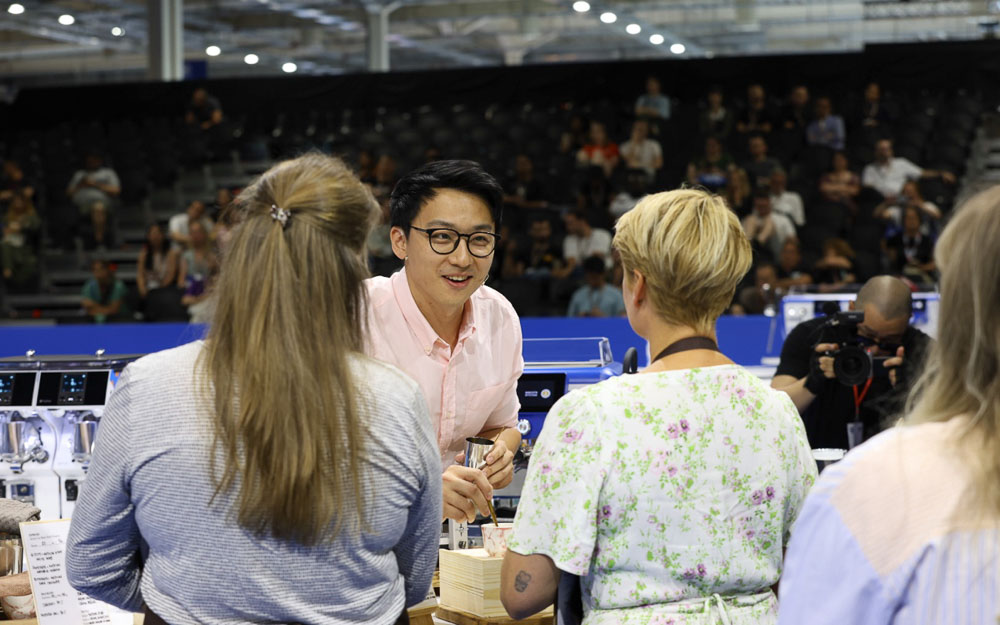
From 21 to 24 June 2023, this year’s World Barista Championship was held at World of Coffee Athens in Greece. Along with the 2023 World Brewers Cup, World Cup Tasters, and World Cezve/Ibrik Championships, the competition was one of the biggest and most exciting highlights of the expo.
This year, for the first time ever, a Brazilian competitor won the World Barista Championship – with Boram Um beating five other baristas in the finals.
But what else happened at the 2023 WBC? Read on to learn more about the top six competitor’s routines, and what we can expect from future competitions.
You may also like our article on new rule changes at the 2023 World Barista Championship.
Unpacking this year’s WBC finalists’ routines
Some 140 competitors took part in the 2023 World Coffee Championships, with many competing in the World Barista Championships.
However, just six of them made it to the final round of the competition.
Boram Um, Brazil
This year’s World Barista Champion, Boram Um of Um Coffee Co., is no stranger to the competition scene. He placed seventh at the 2022 WBC, and 16th the previous year.
“Have you ever heard the line ‘it takes teamwork to make the dream work?’” was Boram’s opening statement during his routine – which encompassed his theme of how all supply chain actors have a role to play in elevating coffee quality.
For his espresso course, Boram used an anaerobically fermented Gesha from Janson Family Estates in Panama. He also used a method known as rapid chilling (or extract chilling) to prepare his espresso, which he said helped to preserve more aromatic compounds.
In his milk course, Boram used a blend of Janson Family Estates’ Gesha and a natural Pink Bourbon from Fazenda Um – his family’s coffee farm in Brazil. Moreover, he also used freeze-distilled lactose-free milk with 3% fat. Once steamed, he rapid-chilled the milk down to 50°C to enhance flavour clarity.
Lastly, as well using the natural Pink Bourbon again for his signature drink round, Boram circled back to his theme of teamwork. By using different ingredients to represent the producer, roaster, barista, and consumer, Boram showcased to the judges how working together helps to improve overall coffee quality.
Daniele Ricci, Italy
Although 2023 WBC runner-up Daniele Ricci works at MAME Coffee in Zurich, Switzerland, he represented his home country of Italy at the event. He also received coaching and training from co-founder of MAME, Emi Fukahori – the 2018 World Brewers Cup Champion and a 2021 WBC finalist.
The theme of Daniele’s routine was how using intentional fermentation processing techniques can unlock new flavours and the “full potential” of coffee.
For both his espresso and milk courses, Daniele used a blend of Gesha and Caturra from Finca Milan, Colombia. The ratios differed, however – using 18g Gesha and 2g Caturra for the espresso, and 18g Caturra with 2.5g Gesha for the milk beverages.
As well as extracting his espresso at 91°C, Daniele also used specific cups for his espresso. These were designed to have a high back and low front so that the judges could fully assess the coffee’s aromatic compounds.
For his milk course, Daniele used freeze distilled milk from a dairy farm close to his hometown in Italy, which he steamed to 50°C. The coffee blend he used in his milk course was also processed using mossto juice from previous fermentations and Schizosaccharomyces yeast, which he said helped to preserve notes of melon.
Finally, for his signature beverage course, Daniele served a mocktail using only Caturra, as well as other ingredients such as homemade yoghurt and tonic water. As a final note, to emphasise his point that innovation is key to pushing specialty coffee forward, Daniele set fire to his tasting note cards.
Jack Simpson, Australia
Hailing from Axil Coffee Roasters in Melbourne – which is also home to 2022 World Barista Champion Anthony Douglas – this was Jack Simpson’s first attempt at the WBC. He placed third at this year’s competition.
Jack started by questioning the role of the barista in an ever changing specialty coffee industry – and how they must adapt to keep driving the sector forward.
The most surprising aspect of Jack’s routine was the coffee he used for his espresso routine: the Ombligo variety from Finca El Diviso in Colombia (where Anthony Douglas also sourced his Sidra coffee for the 2022 WBC).
Not much is known about Ombligo, except for its unusual shape – hence why its name translates to “belly button” in Spanish. Jack explained that the coffee was fermented with Saccharomyces yeast during processing to create flavours of red cherry, blood orange, and yellow peach.
As well as using Weiss Distribution Tools to distribute his ground coffee, Jack also placed his portafilters on a vibrating platform to gently disperse the ground coffee particles more evenly.
For his milk course beverages, Jack used vacuum-distilled cow’s milk, which he made by removing around 30% of its water content.
During his signature beverage round, after adding citric acid to his milk, Jack utilised the vibrating platform again to separate the milk into curds and whey. He mentioned that this helped to complement the other tasting notes, as well as creating a new flavour of toffee apple.
Isaiah Sheese, US
As the owner of Archetype Coffee, Isaiah Sheese has been competing at the US Coffee Championships for years now. He placed fourth at the 2023 World Barista Championship.
“There are no mistakes, just happy accidents,” Isaiah said as he began his routine, quoting American painter Bob Ross as his inspiration. The overarching theme of Isaiah’s performance is that we can now pinpoint exactly where flavours come from during coffee processing, as well as knowing how to manipulate variables to achieve a specific sensory profile.
Similar to Boram Um, Isaiah also used a Pink Bourbon, but from Finca Bella Vista in Colombia. During his espresso routine, he explained that the coffee was processed on another farm (Finca El Paraiso) using 100% controlled fermentation techniques. Again, similar to Boram, Isaiah also used extract chilling to prepare his espresso to preserve flavours of peach, oolong tea, and cherry, with a dark chocolate finish.
For his milk course, Isaiah used cryodesiccated milk – although he didn’t add any additional ingredients to the milk to do this as per the updated 2023 WBC rules & regulations. He mentioned that this method leads to the most consistent and repeatable milk texture and flavour.
Lastly, to emphasise the Pink Bourbon’s unique qualities, Isaiah added a red food dye to his signature beverages – as well as other ingredients such as citric acid, butter syrup, and tonic water.
Dawn Chan, Hong Kong
Dawn Chan – who works for Wan Wan Coffee Roasters – placed fourth at the 2015 WBC and has won the Hong Kong Barista Championship three times. This year, he placed fifth in the competition.
He started his performance by talking about his chosen variety: Typica Mejorado from Finca Soledad in Ecuador. Dawn explained this relatively unknown variety was a new sensory experience for him, and using it allowed him to improve his brewing skills.
Dawn also touched on his concept of balance, talking about the “balance of the future”, “balance of the black”, and “balance of the white”.
Referring to the latter, Dawn served his milk beverages first – using a cold distilled milk which was steamed to 50°C to highlight the coffee’s banana flavours.
Representing “balance of the black”, Dawn blended the Typica Mejorado variety with eugenioides sourced from Finca Inmaculada in Colombia for his espresso course. He said this provided a more balanced sensory profile.
This blend also tied into his “balance of the future” concept for his signature beverages – where Dawn spoke about how we can use other coffees to get the best qualities out of each of them. He added ingredients such as Goji tea, sugar, and a 50% cherry flavour solution.
Patrik Rolf, Denmark
The final top-six competitor was Patrik Rolf, co-founder of April Coffee Roasters. Patrik is a frequent World Barista Championship competitor, and also placed sixth at the 2022 WBC.
Patrik started his routine quoting the famous “life is like a box of chocolates” line from Forrest Gump, which he used to emphasise the impact that fermentation has had on the specialty coffee sector – for good or bad.
During his espresso course, Patrik used red Gesha from Finca La Negrita in Colombia. Notably, he used a low dose of 17g and a high yield of 48g to highlight flavours of passionfruit, white grapefruit, and peach, with a velvety mouthfeel. Moreover, Patrik also used a simple distribution technique by lightly tapping his portafilter before tamping, rather than using WDT tools.
Given the new plant milk rule at the 2023 WBC, Patrik was the only finalist to use a non-dairy milk during his performance. For his milk course, he created a blend of 90% cow’s milk and 10% coconut milk to complement the tropical flavour notes.
In keeping with his fermentation theme, Patrik used two fermented ingredients in his signature beverage round – anaerobic fermented fig leaf cordial and koji fermented red cherry juice.
What happened at the other 2023 World Coffee Championships?
Alongside the 2023 World Barista Championship, there were three other competitions hosted at World of Coffee Athens:
World Brewers Cup 2023
In order of scores, the top six competitors were:
Carlos Medina, Chile
Savina Giachgia, Greece
Garam Victor Um, Brazil
Luca Croce, United Kingdom
George Peng, China
Giacomo Vannelli, Italy
Winner Carlos Medina used a natural processed Sidra from Café Granja La Esperanza in Colombia in his routine.
World Cup Tasters Championship 2023
In order of scores, the top four competitors were:
Young Baek, Australia
Mandie Soengkono, Indonesia
Andrii Vasyliev, Ukraine
Oretis Sfiris, Greece
World Cezve/Ibrik Championship 2023
In order of scores, the top four competitors were:
Pierre de Chanterac, France
Cezara Cartes, Romania
Mariam Erin Pinza, United Arab Emirates
Dimitris Karampas, Greece
What could we expect next year?
With next year’s World Barista Championship set to take place from 1 to 4 May 2024 at the first-ever World of Coffee Asia event in Busan, South Korea, some of the trends we’ve seen on the 2023 stage are sure to make an appearance again.
Coffee trends
Considered a darling of specialty coffee for some time now, Gesha was one of the clear favourites among this year’s WBC finalists – with half of them using this variety. But at the same time, it’s also apparent that this was the year for other arabica varieties to shine – especially Pink Bourbon.
This variety is a natural hybrid of Red and Yellow Bourbon, but it is notoriously difficult to grow. In line with this, while we may see Pink Bourbon appear in more WBC routines in the future, it will still likely be rare on coffee shop menus.
Looking specifically at Ombligo, Typica Mejorado, and eugenioides, it’s clear that the WBC will continue to be a platform for rare and exciting new arabica varieties and species.
Another important point to note is that the majority of coffees at this year’s WBC final were sourced from Colombia, which is becoming a prominent origin at the competition having won the 2022 WBC.
Blends were also popular at the 2023 World Barista Championship, with half of the competitors including them in part of their routines. Undoubtedly, the trend of using blends at the competition will continue to prevail – especially with many baristas emphasising how they help to create more balanced flavour profiles, as well as new taste experiences.
What about milk?
Surprisingly, only one competitor used plant milk at this year’s World Barista Championship – which was blended with cow’s milk. Patrik Rolf’s use of coconut milk seemed to be more of an additional ingredient as opposed to a standalone one, indicating that it may be too soon for competitors to take full advantage of the new plant milk rule change.
In the years to come, however, we are sure to see more competitors using plant-based milks – and most likely as a prominent ingredient.
Five out of the six finalists used some kind of distilling technique for their milk, with an emphasis on increasing sweetness and creaminess, and enhancing texture. In recent years, this has become somewhat of a staple of WBC competitors’ performances – and will continue to be.
Routine concept & theme
At the 2023 World Barista Championship, there were some changes as to how judges assess and score certain aspects of competitors’ routines, including originality in concept, methods, techniques, and ingredients used.
Competitors also had to demonstrate they are a “coffee professional who has command over their presentation and coffee”, and the total impression score was broadened to include several prompt questions, such as:
Did the performance inspire a deeper connection to coffee?
Was the experience immersive, thought-provoking, or otherwise important to specialty coffee?
Would this barista have inspired me about specialty coffee?
Did the performance celebrate the craft of coffee?
Given the consistency of Boram Um’s concept throughout his routine, as well as the flair of Daniele Ricci’s, it’s no surprise that they both placed first and second, respectively.
Going forward, future WBC competitors are sure to focus more heavily on their routine concept and theme.
Year after year, the World Barista Championship asserts its role in the specialty coffee industry. Without its influence, there would certainly be less innovation and creativity in specialty coffee.
For now, we will wait to see what happens on the stage at the 2024 World Barista Championship in Busan, South Korea.
Enjoyed this? Then read our article on why WoC Busan will host the 2024 WBC.
Photo credits: Specialty Coffee Association
Perfect Daily Grind
Want to read more articles like this? Sign up for our newsletter!
The post What happened at the 2023 World Barista Championship? appeared first on Perfect Daily Grind.
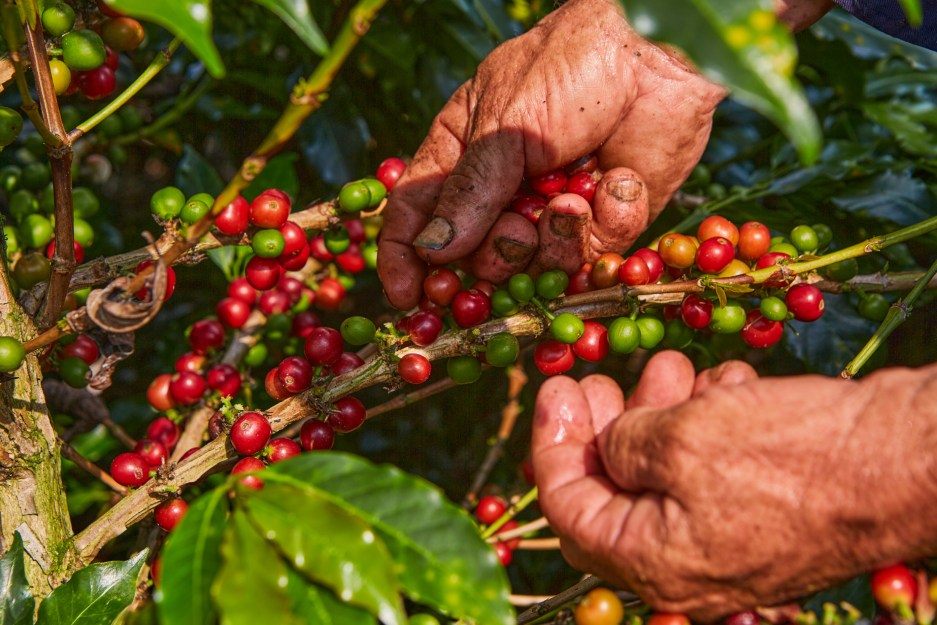
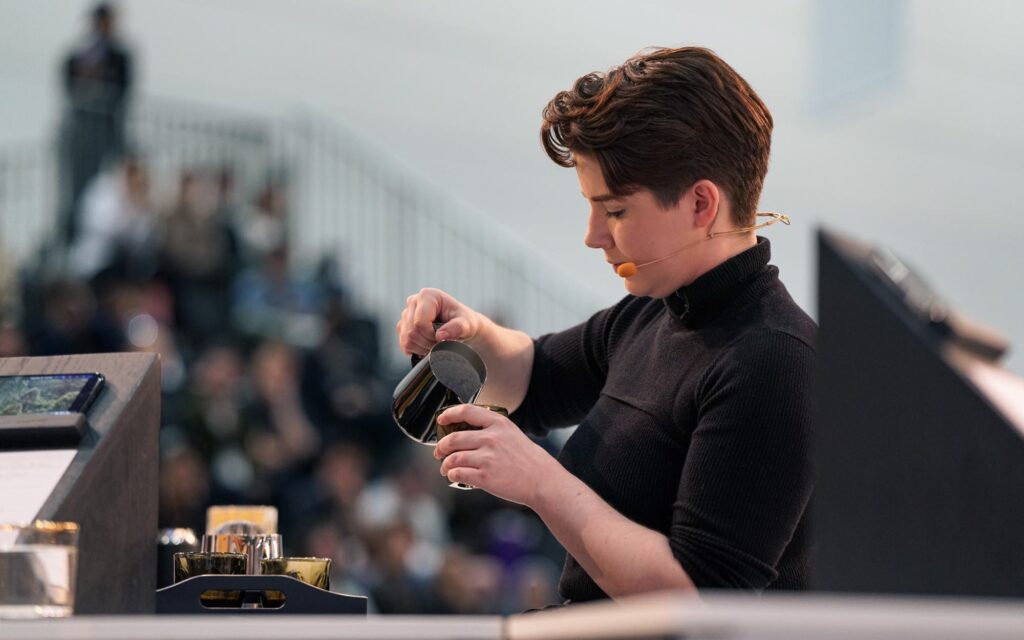
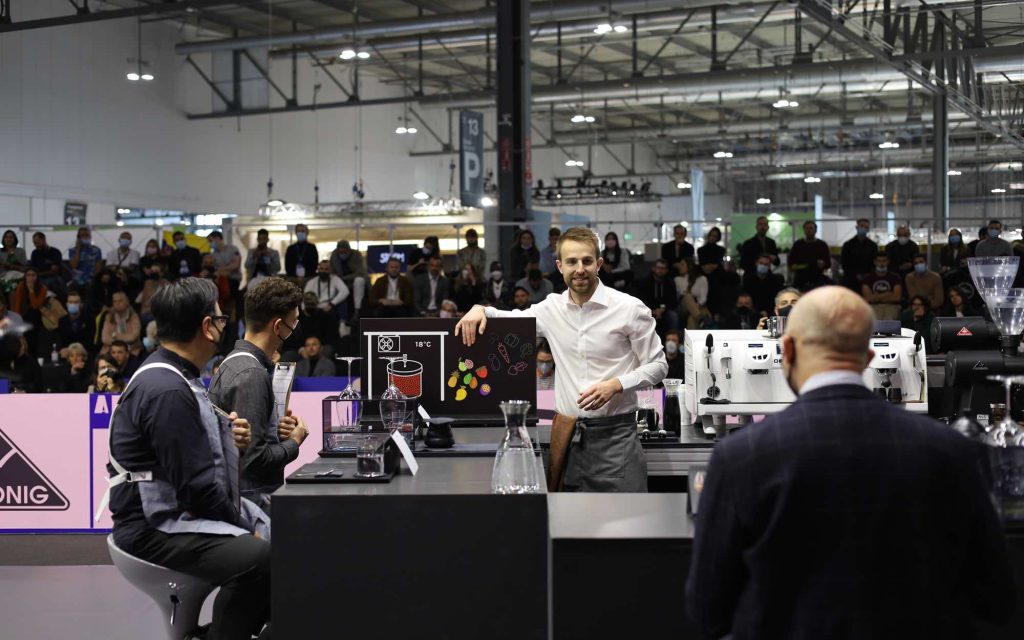
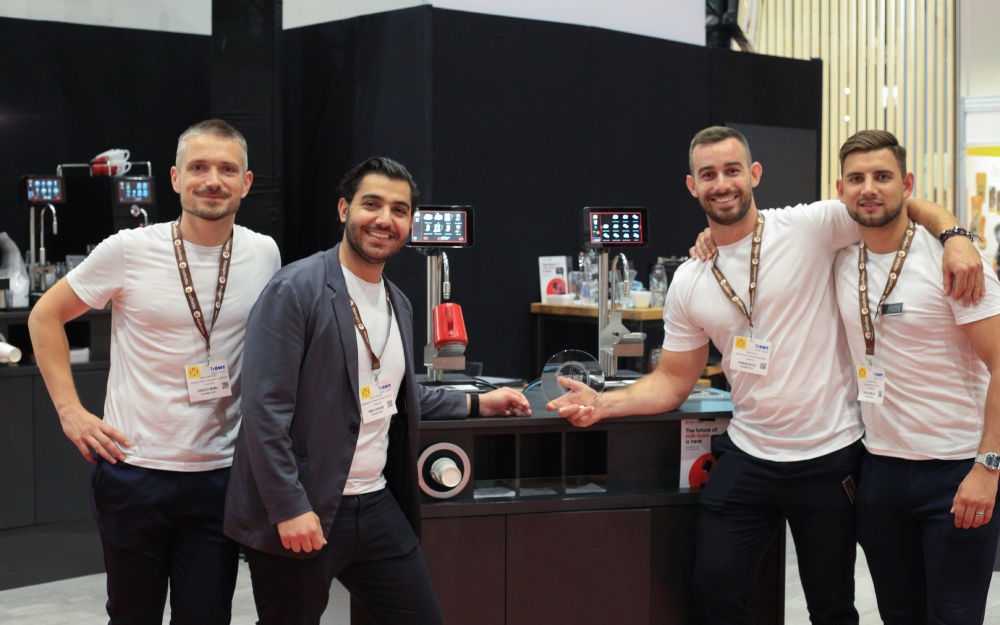
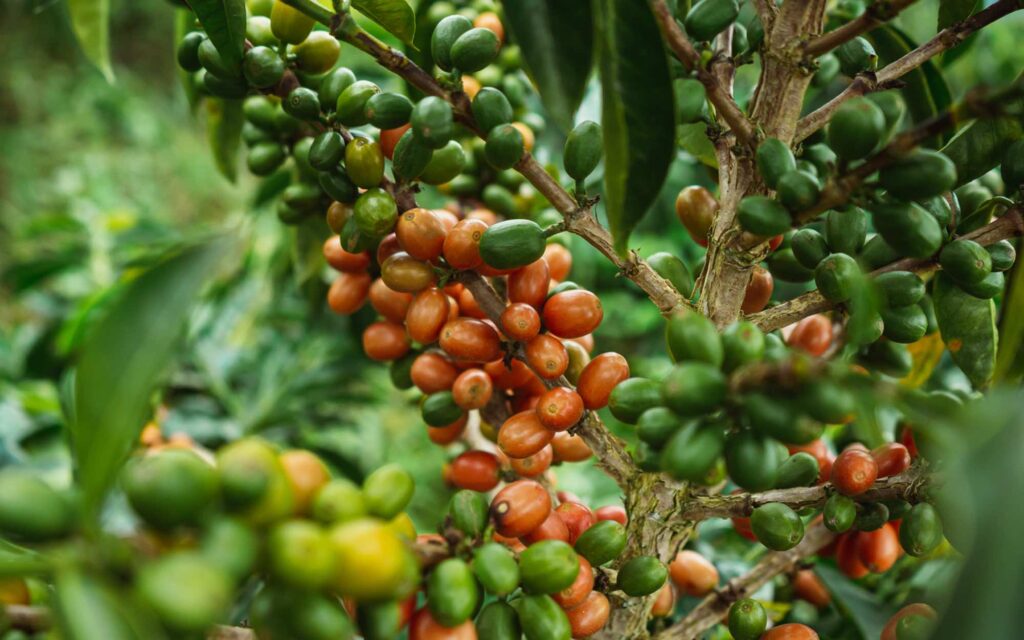
Responses